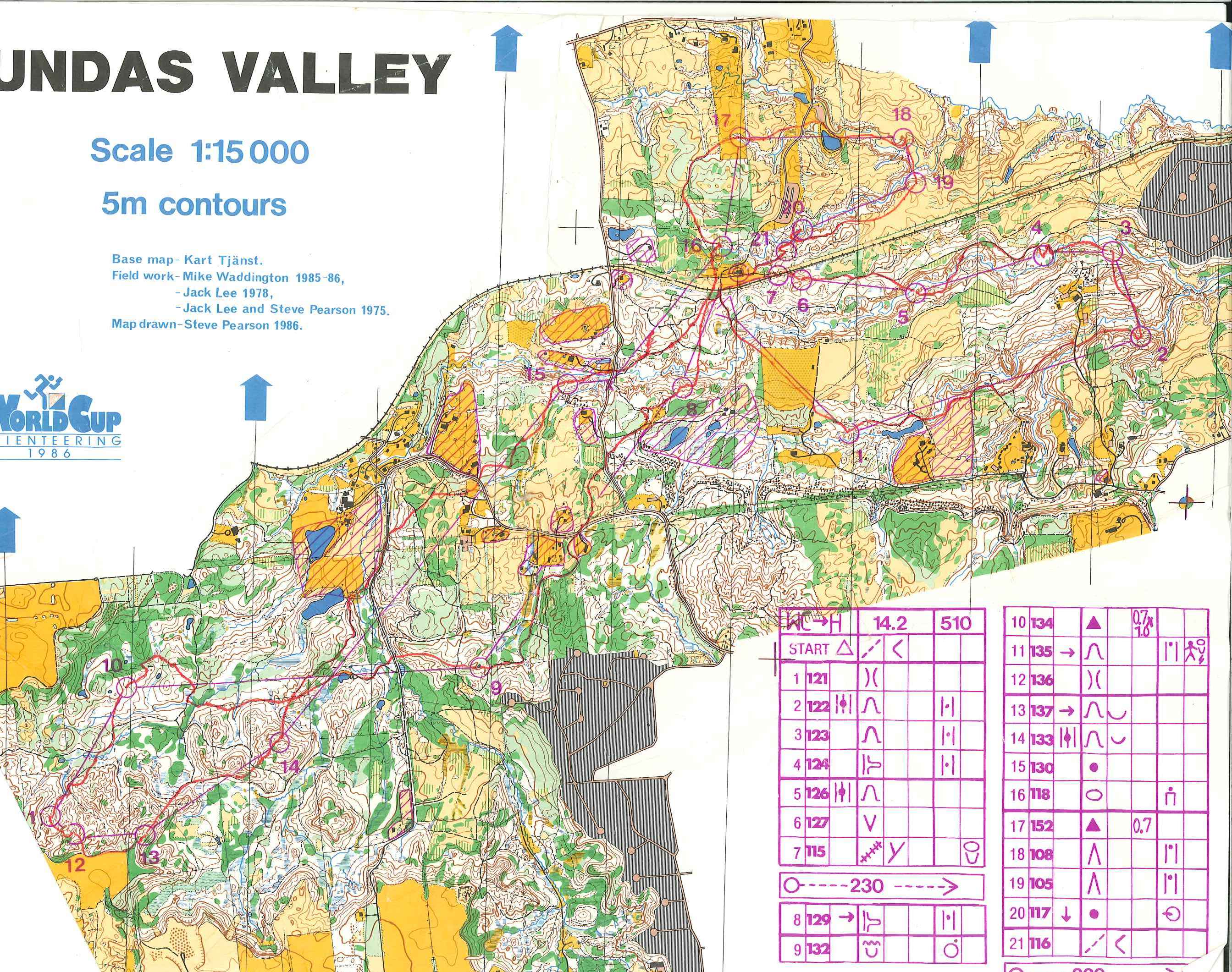1986 was the first official World Cup, which then was held every second year until 2004. From then the World Cup was held annually (more about the World Cup on wikipedia.org and the World Cup 1986 on the IOF website. Elite runners on the international level alternated a year with orienteering all over the world with a year with the focus on the World Championships.
World Cup Halden, Norway, May 1986
fig.1. IndividualWorld Cup Hamilton, Canada, May 1986
fig.2. Individual
fig.3. Relay
World Cup Fahnestock State Park, USA, May 1986
World Cup Raon L'Etape, France, July 1986
fig.5. IndividualWorld Cup Fjärås, Sweden, July 1986
fig. 5b. IndividualWorld Cup Jičín, Czechoslovakia, August 1986
fig.6. Individual
World Cup Eger/Bánkút, Hungary, August 1987
fig.7. Individual
Nordic Open Championships, Åland, Finland, August 1987
fig.8. Individual
fig.9. Relay
World Cup, Stäfa, Switzerland, October 1986
fig.10. Individual. First part.
fig.11 Individual. Second part. (Chase-start? Map excerpt in larger scale and with different equidistance?)




















































